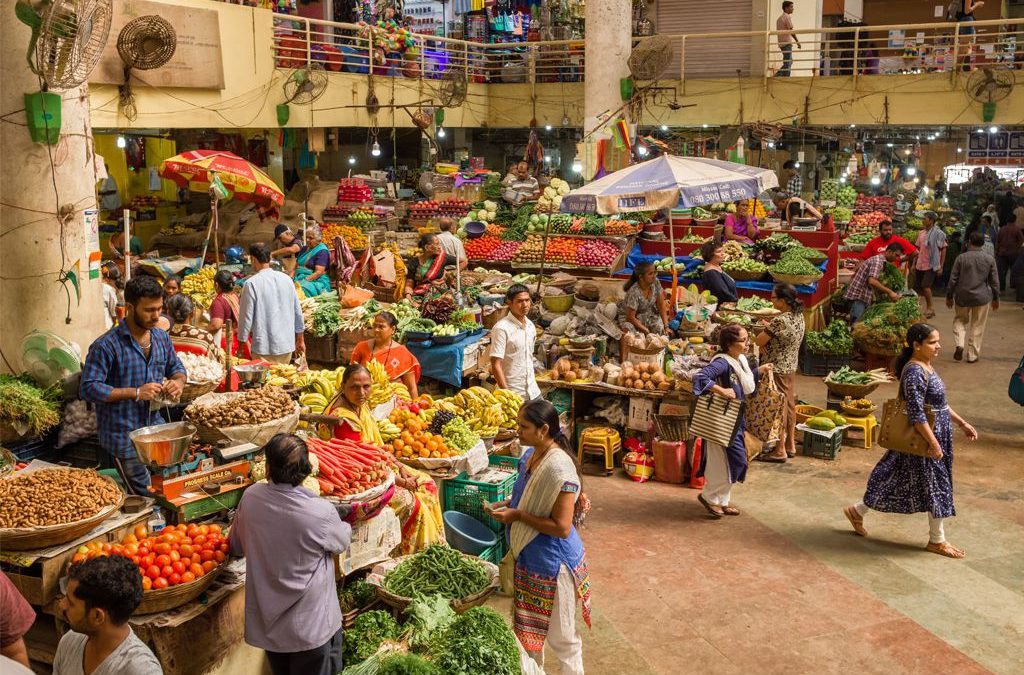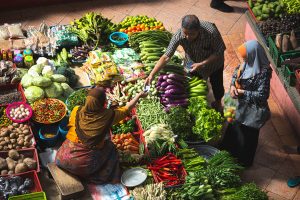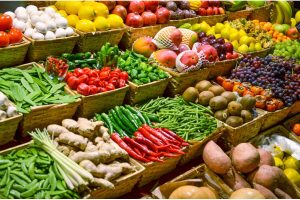Imagine a community where everyone has enough nutritious food to eat every day. Now, think about the challenges that could disrupt this balance. Which factor would decrease the food security of a community? It might be a sudden change in climate, economic hardship, or even political instability. Identifying these risks helps us understand how to protect and strengthen food security for everyone.
A major factor that can decrease a community’s food security is limited access to productive resources like land, water, and seeds. When these essential resources are scarce or controlled by a few, local food production suffers, impacting availability and affordability. For example, if fertile land is monopolized for export crops rather than local food, the community may rely on imports, which can be volatile in price and supply.
Climate change further compounds this issue by making weather patterns unpredictable, often leading to droughts, floods, or poor crop yields. Such instability makes it difficult for communities to maintain a steady food supply, increasing their vulnerability to hunger and malnutrition.
Importance of understanding factors that impact food security.
Understanding the factors impacting food security is essential because it allows societies to ensure reliable access to sufficient, nutritious, and affordable food for their populations. Here’s why it matters in detail:
- Global Health and Nutrition
Food security directly affects the health of a population. When people lack access to nutritious food, they may suffer from malnutrition, which can lead to weakened immune systems, stunted growth in children, and increased susceptibility to disease.
This is particularly critical in low-income communities and developing countries where resources are scarce. Understanding these factors helps policymakers and organizations implement targeted strategies to improve food access and quality, which ultimately enhances public health and productivity.
- Economic Stability and Development
Food security is intertwined with economic stability. Agriculture, which forms the backbone of food production, provides jobs and income for millions of people worldwide. Factors such as climate change, water scarcity, and market fluctuations can disrupt food production, causing instability in food prices and livelihoods.
A thorough understanding of these elements allows for developing resilient agricultural practices and economic policies, ensuring that food production can withstand shocks without causing severe economic downturns or food shortages.
- Environmental Sustainability
Ensuring food security is closely linked to protecting the environment. Intensive agricultural practices, deforestation, and water overuse can degrade ecosystems, leading to soil erosion, loss of biodiversity, and pollution.
Climate change exacerbates these issues, impacting crop yields and food supply stability. By understanding these factors, communities can promote sustainable agricultural practices, such as crop rotation, efficient water usage, and sustainable land management, which are vital for long-term food security.
- Social and Political Stability
Food security is often a key element in maintaining social and political stability. Food shortages can lead to unrest, conflict, and migration as people search for better living conditions. For example, food price hikes were a factor in the Arab Spring uprisings. By understanding and addressing the variables impacting food security, governments and organizations can prevent such crises, promoting stability within regions and reducing forced migration due to hunger.
- Impact of Climate Change and Environmental Shifts
Climate change impacts food security through altered weather patterns, increased frequency of extreme weather events, and changes in water availability. Such changes disrupt traditional agricultural cycles, affecting yields and food availability. Understanding these environmental factors enables adaptation strategies like drought-resistant crops and enhanced irrigation techniques to ensure food remains available despite climate pressures.
- Technological Advancements and Innovation in Agriculture
Innovation in agricultural technology, such as precision farming, genetically modified crops, and efficient irrigation systems, can significantly enhance food security. However, access to these technologies often varies globally, impacting food production capacity differently. Recognizing the importance of technology and innovation in food security can drive investment, research, and equitable distribution, particularly in regions where traditional farming methods may be less resilient to external pressures.
- Equity and Access to Resources
Food security isn’t only about producing enough food; it’s about ensuring that food is equitably distributed and accessible. Socioeconomic disparities can result in food deserts where healthy food is unavailable or unaffordable, contributing to food insecurity in both developed and developing nations. Understanding these social and economic factors is essential for designing policies that improve access, such as subsidies for low-income families or programs to bring fresh produce into underserved areas.
- Policy and Governance
Effective governance plays a crucial role in maintaining food security. This includes creating supportive policies for food storage, trade, and distribution and establishing safety nets during crises, such as subsidies and emergency food programs. Governments that understand the importance of these governance factors are better equipped to protect their citizens from food insecurity.
A deep understanding of food security factors is crucial for developing resilient systems that ensure everyone can access nutritious food sustainably. As global populations grow and environmental challenges increase, addressing these factors becomes ever more critical for a balanced, stable, and secure future.
Factors Decreasing Food Security in Order of Impact
Food security is the consistent access to enough nutritious food for an active, healthy life. Various factors impact food security, ranging from environmental and economic influences to political and social challenges. Below are the factors that most significantly affect food security, arranged in order of impact:
- Climate Change
- Explanation: Climate change is one of the biggest threats to food security because it directly impacts agricultural productivity. Changes in temperature, precipitation patterns, and the increased frequency of extreme weather events (such as droughts, floods, and storms) make it harder to grow crops, leading to reduced food production.
- Impact on Food Systems: Higher temperatures can reduce yields for staple crops like wheat, maize, and rice, particularly in regions near the equator. Erratic rainfall can disrupt planting and harvesting schedules, while droughts can lead to severe crop failures. Rising sea levels also threaten coastal farmland, and the acidification of oceans affects fisheries, reducing available seafood.
- Water Scarcity
- Explanation: Water is crucial for agricultural productivity, and scarcity poses a major threat to food security. Water scarcity results from both natural factors, such as droughts, and human activities, like over-extraction and pollution of freshwater sources.
- Impact on Food Systems: In regions where water scarcity is prevalent, irrigation becomes difficult, which limits crop yields and can even halt agricultural production altogether. Water scarcity also affects livestock, reducing their numbers and health, impacting the availability of meat, dairy, and other animal products.
- Economic Inequality and Poverty
- Explanation: Poverty and inequality affect food security by limiting individuals’ access to nutritious food, even if it’s available in their region. Economic disparity restricts the purchasing power of lower-income populations, making nutritious foods unaffordable.
- Impact on Food Systems: In low-income households, limited resources often lead to a reliance on cheaper, calorie-dense but nutrient-poor foods. This can result in malnutrition, especially among children, impacting their development and perpetuating a cycle of poverty and poor health.
- Population Growth
- Explanation: Rapid population growth increases the demand for food, putting additional pressure on food production systems, particularly in regions with limited agricultural resources or infrastructure.
- Impact on Food Systems: As populations grow, arable land becomes limited, and existing resources are stretched. This leads to intensified agricultural practices, which may degrade the environment and reduce long-term productivity. High demand can also drive up food prices, making food less accessible to those with limited income.
- Conflict and Political Instability
- Explanation: Conflicts disrupt food production, distribution, and market accessibility, leading to food shortages and increased prices. Political instability can create uncertainty, preventing investments in agriculture and deterring farmers from planting crops.
- Impact on Food Systems: In conflict zones, infrastructure like roads, warehouses, and farms may be destroyed, halting the movement of food supplies. Prolonged instability often displaced people, creating food crises as refugees require immediate assistance. International aid may be limited or redirected, reducing resources for local food security programs.
- Land Degradation and Soil Erosion
- Explanation: Poor farming practices, deforestation, and overgrazing degrade soil quality, leading to erosion and loss of fertile land. This reduces the land’s capacity to support agriculture, impacting food security, especially in regions where farming is already challenging.
- Impact on Food Systems: Soil erosion and loss of soil fertility reduce crop yields and increase dependency on artificial inputs like fertilizers, which are not always affordable for small farmers. Over time, this degradation can turn productive land into barren areas, further threatening food security.
- Loss of Biodiversity
- Explanation: Biodiversity is essential for resilient ecosystems, which support agriculture. The loss of biodiversity through monoculture farming, deforestation, and pollution reduces the resilience of food systems to pests, diseases, and changing environmental conditions.
- Impact on Food Systems: Monocultures, or single-crop farming, increase vulnerability to pests and diseases, potentially wiping out entire harvests. Biodiverse farms are more resilient, providing a range of crops and foods that can buffer against the failure of any single source. Loss of biodiversity also affects pollinators like bees, crucial for producing many fruits and vegetables.
- Food Waste and Loss
- Explanation: Food waste occurs at all stages of the food chain, from farm to consumer. Food loss happens during production, storage, and transportation, while waste occurs mainly at the consumer level. Both contribute to food insecurity by reducing the overall availability of food.
- Impact on Food Systems: Wasted food represents lost resources such as water, energy, and labor, reducing the efficiency of food systems. In lower-income countries, inadequate storage and transportation infrastructure lead to high levels of food loss, while in higher-income countries, consumer-level waste is more significant. Addressing food waste can increase food availability without the need to increase production.
- Trade Restrictions and Market Instability
- Explanation: Global trade policies impact food security by affecting the availability and prices of food. Restrictions like tariffs, export bans, and subsidies can distort markets, making food less affordable and accessible, particularly in countries that rely on imports.
- Impact on Food Systems: When countries impose export restrictions, food prices can increase globally, impacting low-income countries more severely. Market instability can also discourage investments in food production, affecting long-term food availability. Access to diverse food sources is crucial for maintaining food security, especially when local production is inadequate.
- Health Pandemics and Global Health Crises
- Explanation: Pandemics disrupt food production and distribution as labor shortages, lockdowns, and health restrictions limit people’s ability to work, transport goods, and access food markets.
- Impact on Food Systems: Health crises like the COVID-19 pandemic show how disruptions in supply chains can lead to temporary food shortages and increased prices. Labor shortages in agriculture and food processing cause production delays, affecting the availability of fresh food. Pandemic-related income loss also limits household spending power, further impacting food access.
Addressing these factors requires a combination of innovative solutions, policies focused on sustainability, and efforts to reduce inequality and improve resilience within food systems.
Strategies for Mitigation
Mitigating food insecurity requires strategic actions to strengthen local food systems and enhance resilience. Effective strategies can empower communities, promote sustainability, and ensure access to nutritious food.
Strategies for Mitigation
- Diversification of Agriculture: Encouraging the cultivation of various crops can reduce reliance on single food sources, improving resilience to pests, diseases, and climate variations. Crop rotation and intercropping can enhance soil health and biodiversity.
- Support for Local Farmers: Providing resources, training, and access to markets for smallholder farmers strengthens local economies and boosts food production. This includes financial support, extension services, and cooperative initiatives.
- Sustainable Practices: Promoting agroecological methods and organic farming protects the environment and maintains soil health. Techniques such as cover cropping and reduced pesticide use can enhance ecosystem stability.
- Climate Resilience: Implementing climate-smart agriculture practices, such as drought-resistant crops and water management strategies, helps farmers adapt to changing climate conditions and reduces vulnerability to extreme weather.
- Strengthening Local Food Systems: Developing local food networks enhances access to fresh produce while reducing reliance on imports. Farmers’ markets and community-supported agriculture can connect consumers directly with producers.
- Investment in Infrastructure: Improving transportation, storage, and market facilities reduces food loss and enhances distribution. Effective infrastructure ensures that food reaches consumers promptly and in good condition.
- Education and Awareness: Providing training on nutrition and sustainable farming practices empowers communities to make informed choices. Workshops and outreach programs can improve dietary diversity and farming efficiency.
- Policy Advocacy: Engaging in advocacy for policies that support equitable food distribution and small farmers can create a more just food system. Policies should prioritize fair trade and protect the rights of local producers.
- Social Safety Nets: Establishing programs that assist vulnerable populations during crises ensures that everyone has access to food resources. This can include food banks, emergency aid, and direct cash transfers.
- Research and Innovation: Investing in research for resilient crop varieties and innovative farming practices enhances productivity and sustainability. Collaboration with local universities and research institutions can lead to practical solutions.
By implementing these strategies, communities can strengthen their food systems and enhance resilience against challenges. A comprehensive approach that includes support, education, and sustainable practices is vital for achieving long-term food security.
Conclusion
Food security is vital for the well-being of any community, and various factors can threaten it. Which factor would decrease the food security of a community? One significant factor is the disruption of local agricultural practices due to climate change, economic instability, or loss of arable land.
Such disruptions can lead to decreased food production, increased prices, and ultimately, food scarcity, affecting the health and stability of the entire community. Addressing these challenges is crucial to ensure a sustainable and secure food supply for all.




